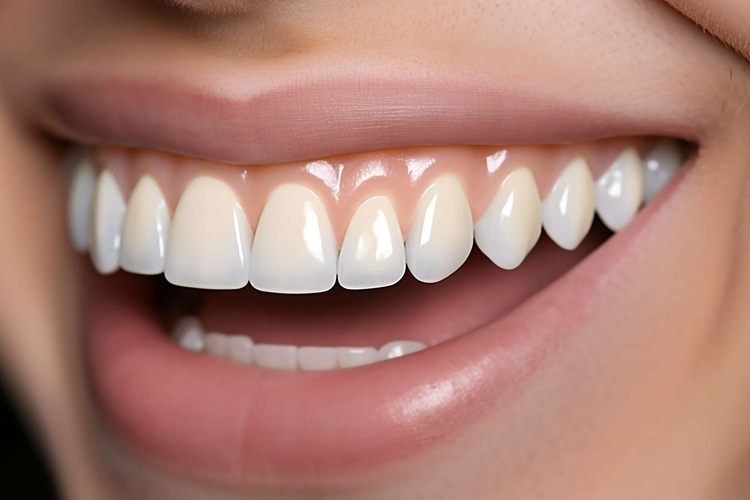Mythbusting common claims about at-home smile brightening
Many people try whitening toothpastes and store-bought brightening options hoping for a whiter smile. This article examines common claims about at-home smile brightening, explaining how ingredients work, what they can and cannot do to enamel and stains, and what users should consider about sensitivity and sustainability.

Many over-the-counter whitening pastes promise noticeable changes, but the science is more nuanced. At-home products can alter surface appearance, remove certain stains, and influence mouthfeel, but they don’t replace professional assessment. This article unpacks how common whitening claims align with ingredient science, abrasivity measures, and everyday oralcare habits to help you set realistic expectations.
This article is for informational purposes only and should not be considered medical advice. Please consult a qualified healthcare professional for personalized guidance and treatment.
How does toothpaste affect enamel?
Toothpastes interact directly with enamel by cleaning and sometimes polishing the outer surface. Enamel is the hard, mineral-rich outer layer of teeth; it cannot be rebuilt once lost, so products should avoid excessive abrasivity. Many whitening formulations aim to remove surface film and deposits without chemically altering enamel. Fluoride is commonly included to help remineralize weakened areas and reduce risk of decay, while polishing agents and gentle abrasives aim to lift surface residue. Overuse of highly abrasive pastes or aggressive brushing can thin enamel, potentially exposing dentin and increasing sensitivity, so balanced abrasivity is important for daily oralcare.
Do whitening pastes remove stains?
There are two broad types of staining: extrinsic (on the surface) and intrinsic (within the tooth). Whitening toothpastes are usually effective against extrinsic stains caused by food, drink, or tobacco because they combine mechanical polishing and chemical agents that break down surface films. For deeper intrinsic stains, over-the-counter pastes are less likely to produce significant change; such discoloration may require professional treatments. Ingredients labeled as peroxide may offer limited bleaching action at low concentrations, but most mainstream whitening pastes rely primarily on polishing abrasives and stain-dispersing chemicals to make teeth look cleaner rather than dramatically lighter.
Will whitening cause sensitivity?
Sensitivity is a commonly reported side effect and can occur when brushing exposes dentin or when chemicals affect nerve endings. Abrasivity, certain peroxide levels, and acidic ingredients can all contribute to transient or longer-lasting sensitivity. If you already have exposed roots, gum recession, thin enamel, or existing sensitivity, choose low-abrasivity formulas and look for fluoride and desensitizing agents such as potassium nitrate. Reducing brushing pressure, using a soft-bristled brush, and limiting the frequency of whitening-specific products can help manage sensitivity while maintaining routine oralcare.
What role do peroxide and other ingredients play?
Peroxide (hydrogen or carbamide) is a bleaching agent that can oxidize pigmented molecules; however, the concentration in toothpastes is usually low compared with professional gels. Many whitening pastes instead include surfactants, enzymes, and mild chelators that loosen stain particles, along with silica or other abrasives that provide polishing action. Fluoride appears in many formulas to support enamel health, and flavoring or humectants affect mouthfeel. Understanding ingredient lists helps: peroxide indicates potential bleaching action, while ingredients like silica relate to abrasivity and polishing; surfactants and enzymes relate to stain dispersal and plaque control.
What is abrasivity and how does polishing work?
Abrasivity describes how much a paste will wear away surface material during brushing. The Relative Dentin Abrasivity (RDA) scale is an accepted measure in dental research; lower numbers indicate gentler action. Polishing relies on controlled abrasivity to remove surface stains without damaging enamel. Excessively abrasive pastes can remove microscopic enamel structure and create rougher surfaces that attract more plaque and stains, counteracting their intent. Balanced formulations aim to provide effective polishing while maintaining enamel integrity and acceptable mouthfeel for everyday oralcare.
How do sustainability and packaging factor in product choice?
Sustainability is increasingly part of product selection. Consumers may look for recyclable packaging, reduced plastic, and ethically sourced ingredients. Formulas that rely on less intensive chemical processing or plant-derived abrasives can appeal to environmentally conscious buyers, but sustainability should not compromise safety: fluoride, when included, provides proven benefits for decay prevention, and ingredient transparency helps assess environmental impact. Mouthfeel, taste, and foam characteristics influence user adherence; a product that feels good encourages consistent brushing, which is a key factor in controlling plaque and maintaining overall oral appearance.
Conclusion Whitening toothpastes can help reduce extrinsic stains and improve perceived brightness through polishing and stain-dispersing ingredients, but they have limits. They are not guaranteed to change intrinsic discoloration and can cause sensitivity or enamel wear if misused. Consider ingredients like fluoride, abrasivity ratings, and whether peroxide is present, and balance whitening goals with long-term enamel protection and sustainability preferences. For persistent discoloration or concerns about sensitivity, consult a dental professional for tailored advice and options.





